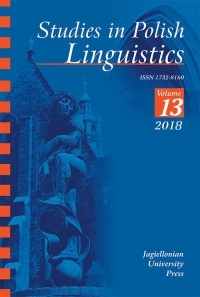Weak Communication, Joke Targets and the Punch-Line Effect: A Relevance-Theoretic Account
Weak Communication, Joke Targets and the Punch-Line Effect: A Relevance-Theoretic Account
Author(s): Agnieszka Piskorska, Maria JodłowiecSubject(s): Semantics, Pragmatics
Published by: Wydawnictwo Uniwersytetu Jagiellońskiego
Keywords: joke; relevance theory; weak communication; cognitive effect; comprehension heuristic; humour target;
Summary/Abstract: The paper offers an analysis of the cognitive mechanisms underlying the production and comprehension of verbal jokes in terms of what relevance theorists refer to as weakly communicated import. While pragmatic analyses of humour emphasize the role of the inferential stages that the audience is intended (or even manipulated, Yus 2016) to go through in processing a joke, the weak communication model presented here focuses on the punchline effect, exploring the nature of the “cognitive climax” that is created. On this account, a vast array of weakly communicated assumptions, resulting in a cognitive overload effect, rather than incongruity resolution on its own, is identified as the laughter-inducing mechanism underlying verbal humour. The central idea is that universal and culture-specific humour-generating elements in jokes have one quality in common, viz. their potential to cause a cognitive overload effect, which may, and often does, result in amusement. On this approach, what is typically recognized as national or ethnic humour is posited to recruit the same humour-invoking pragmatic mechanisms as in other kinds of jokes, the principal difference lying in the choice of the target being mocked, which must be well-known to the audience for the cognitive overload effect to be brought forth.
Journal: Studies in Polish Linguistics
- Issue Year: 13/2018
- Issue No: 1
- Page Range: 25-44
- Page Count: 20
- Language: English

